Posted by Elena del Valle on September 27, 2012
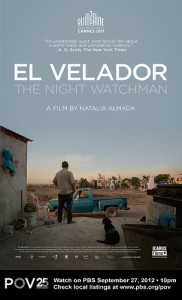
El Velador film poster – click to enlarge
Video, photos: El Velador (The Night Watchman)
Mexico’s drug war is said to have resulted in 50,000 violent deaths from the last few years to date. One place where the dead are remembered is in a cemetery in Culiacan, Mexico where many of the country’s drug lords are said to be buried. El Velador (The Night Watchman), a 72-minute 2011 documentary about a slice of everyday life with the night watchman who looks after the cemetery and its elaborate mausoleums, is airing in the United States on PBS and as part of a national museum tour including Wexner Center for the Arts, Columbus, Ohio; Walker Art Center, Minneapolis; Nelson-Atkins Museum of Art, Kansas City; and Yerba Buena Center, San Francisco. Scroll down to watch a video clip of the documentary.
“Drugs are trafficked and consumed around the world and yet Mexico is the battlefield of the war on drugs. I hope El Velador is a film that will touch audiences and help us understand what it means to live in a situation of violence and what socio-economic conditions lead to violence,” said Natalia Almada, director of the film, by email in response to a question about why she filmed the documentary and how she believes it is relevant to United States audiences today.
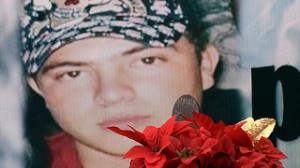
A scene from El Velador
El Velador will stream on the POV website, www.pbs.org.pov/, from September 28 to December 20, 2012. Details about the museum tour can be found at http://www.icarusfilms.com/playdates.html#vela and information about the film DVD is listed at http://www.icarusfilms.com/new2011/vela.html
The film begins inside the watchman’s truck with a view of the cemetery through a dirty and fogged up windshield reminiscent perhaps of the public’s view of the war itself. With an introspective slow tone the film is notably dark during the evening scenes, featuring background television and radio news and little Spanish language dialogue with English language subtitles. The modest, poor looking construction workers with torn shoes present a contrast to the expensive structures they build for the newly departed. Also notable are the luxury cars and the large colorful banners each with a photo and years of birth and death commemorating of the deceased.
“When I first went to film at the cemetery where the film takes place in July 2009, there were four new mausoleums under construction and a tractor was digging up the dirt for a new hole to bury another 300 bodies,” said Almada in a press release. “The ‘progress’ of the cemetery mirrored the violence that was spiraling out of control.”
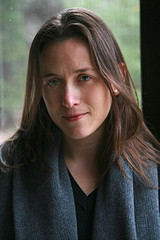
Natalia Almada, director, El Velador
“In making El Velador, I hoped to gain entry to that world of violence. To experience what it means to live in that context, to work, to mourn, to sweat, to sleep there. I wanted to pause, and I wanted others to pause and be suspended in that place and moment where violence has just occurred and where violence is imminent. By restricting myself to one small corner of the cemetery, I came to realize that it is only by paying attention to the details that we can begin to fathom the complexity of violence,” said Almada in her filmmaker statement (she referred queries to the POV and film websites).
The film, co-produced by POV (Point of View) American Documentary Inc. and Natalia Almada (Al Otro Lado, 2006; El General, 2010), had a $300,000 budget. Almada, an award-winning director originally from the state of Sinaloa in northern Mexico, was also producer, director of photography and editor of the documentary. She received the 2009 Sundance Documentary Directing Award for her film about her great-grandfather, Mexican president Plutarco Elías Calles.
POV (Point of View) is one of television’s longest-running showcase for independent non-fiction films on PBS. Since 1988, POV has presented 300 films to public television audiences across the country.
Posted by Elena del Valle on September 26, 2012
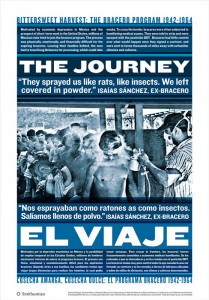
Smithsonian Bracero Exhibit poster – click to enlarge
Photos: Leonard Nadel, Bracero photo courtesy Smithsonian National Museum of American History
Many people are aware that there were labor shortages in the United States during World War II, what they may not know is that to overcome the situation the government initiated a series of agreements with Mexico to recruit guest workers for American farms and railroads. The Emergency Farm Labor Program, more familiarly known as the Bracero Program, brought as many as 2 million Mexicans to the United States for this purpose.
While the work was often grueling, the program offered participants economic opportunity, and the contributions made by these laborers have had significant impact on the political, economic and social climate of both countries, according to the Smithsonian Institution Traveling Exhibition Service (SITES).
This fall the Smithsonian Institution Traveling Exhibition Service is featuring an exhibit about this little-known chapter in American history as its fall 2012 free resource for schools, migrant education centers, museums and libraries. Titled “Bittersweet Harvest: The Bracero Program, 1942-1964,” the exhibit, based on the traveling exhibition by the same name with images and interviews by documentary photographer Leonard Nadel, includes a set of six bilingual posters made this year based on the materials from the exhibition.
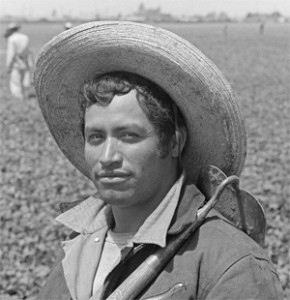
Bracero in the field, 1956
The exhibit was organized by the National Museum of American history in partnership with the SITES, and received federal support from the Latino Initiatives Pool, administered by the Smithsonian Latino Center. The collection will be on display in several states through 2014. Two copies of the same exhibition have visited 10 cities nationally. A list of cities and dates may be found at sites.si.edu/bracero/
“We partnered with University of Texas, El Paso and Brown University and other regional universities to invite former braceros and family to participate,” Steve Velasquez, curator, original Bracero exhibition, explained by email when asked about the selection criteria for the exhibit. “We recorded over 700 interviews. We used the Nadel images as a guide touching on the themes of why they created the program and why they journeyed, what kinds of work did they do, what was the experience like, and what was the legacy of the program in the US. We reviewed close to 200 interviews to use in the exhibit. The poster set is drawn from Bittersweet Harvest exhibit.”
In response to the question about the people and organizations responsible for selection of the project, he said: “We held an advisory meeting in 2005 with other experts in Mexican American history, bracero history, public history, agriculture/labor history, and Latino history. Our partners contributed resources to the collecting of the materials. George Mason University helped create the website braceroarchive.org. At the Smithsonian Institution the curators and educators were Peter Liebhold, Steve Velasquez, Magdalena Mieri, and Bonnie Campbell Lillienfeld. Kristine Navarro and staff from UTEP Matt Garcia from Brown Univ., Sharon Leon from GMU. As well as a host of other institution that provided space to do collecting.”
Little information remains of the program participants today, he explained: “We have no record of how many remain in the US today. The contracts indicate that they needed to return to Mexico at the end of the contract or after 18 months. From our research we know some were sponsored to get work permits and citizenship by growers or married Americans. Some returned later in life. Some went back to Mexico never to return. Some skipped out on the contracts. Many men held multiple contracts.”
The organizers have not decided what will happen to the exhibition when the tour ends. The National Museum of American History collects, preserves and displays American heritage in the areas of social, political, cultural, scientific and military history. The Smithsonian Latino Center is dedicated to ensuring that Latino contributions to arts, sciences and the humanities are highlighted, understood and advanced through the development and support of public programs, scholarly research, museum collections and educational opportunities at the Smithsonian Institution and its affiliated organizations across the United States.
Posted by Elena del Valle on September 24, 2012
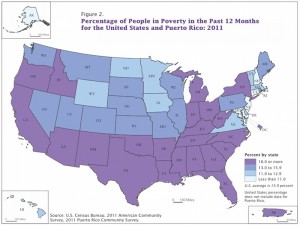
U.S. Poverty by State 2011 – click to enlarge
Graphic: U.S. Census Bureau American Community Survey 2011
Median household income remained mostly unchanged between 2010 and 2011 in 32 states and the District of Columbia, according to the U.S. Census report Household Income for States: 2010 and 2011. Last year, median household income ranged from $36,919 in Mississippi to $70,004 in Maryland.
The median household income nationally was $50,502. It was lower than the national median in 27 states and higher in 19 states and the District of Columbia. North Dakota, Wisconsin, Nebraska and Pennsylvania median household incomes did not have a statistically significant difference from the U.S. as a whole.
Poverty numbers, unlike median household income numbers, increased in 17 states for the same time period according to the report Poverty: 2010 and 2011, which compares poverty rates in 2010 and 2011 for the nation, states and large metropolitan areas. At the state level, New Hampshire (8.8 percent) had the lowest poverty rate, and Mississippi (22.6 percent) had one of the highest poverty rates. The map above illustrates how most of the bottom half of the country, marked in purple, has a high percent of poverty.
In metro areas with populations of 500,000 or more, poverty rates ranged from a low of 8.3 percent in the Washington metro area, to 37.7 percent in McAllen-Edinburg-Mission, Texas. For 10 states, this was the third consecutive annual increase in the number and percentage of people in poverty.
In five states, the number of people in poverty increased but the poverty rates did not go up. Between the 2010 and 2011 American Community Survey, the percentage and number of people in poverty in Vermont declined.
Posted by Elena del Valle on September 21, 2012
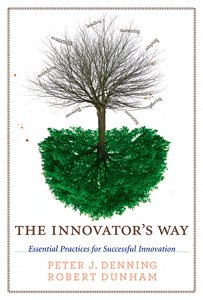
The Innovator’s Way book cover
Photos: The MIT Press
Many entrepreneurs may believe innovation, the adoption of change, leads to success. Data do not support that belief: The success rate for innovation initiatives is an unexpectedly low 4 percent, according to Business Week (2005).
Peter J. Denning and Robert Dunham, authors of The Innovator’s Way Essential Practices for Successful Innovation (The MIT Press,$29.95), 434-page hardcover book published in 2010, believe innovation is a personal skill that can be developed and expanded. They are of the opinion that there are innovation regularities that recur and make it possible to learn and practice the skills that foster innovation. They make a distinction between innovation and invention and clarify that invention doesn’t have to preclude innovation.
Denning and Dunham noticed two notable exceptions to the low innovation rate. They are individuals who are “serial innovators” with a higher than 50 percent success rate; and “collaboration networks” made up of volunteer groups with limited managerial oversight such as the internet, the World Wide Web and Linux.
The authors define eight personal practices they believe successful innovators share: sensing, envisioning, offering, adopting, sustaining, executing, leading, and embodying. Weakness in any of these, according to the authors, may lead to lack of innovation.
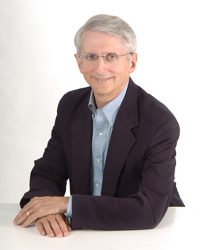
Peter Denning, co-author, The Innovator’s Way
In their book, divided into 16 chapters and four appendices, they outline the eight practices, how readers may apply them at an individual and group level. Their goal in writing the book is to present to readers an explanation of the way that they can develop a sensibility to innovation and learn the skills it requires through practice.
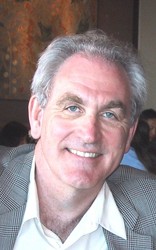
Robert Dunham, co-author, The Innovator’s Way
At the time the book was published, Denning was Distinguished Professor, chair, Computer Science Department, and director, Cebrowski Institute for Information Innovation and Superiority, Naval Postgraduate School in Monterey, California. Dunham founded the Institute for Generative Leadership, and Enterprise Performance, a consulting company.
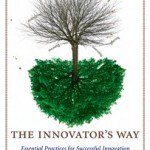
Click to buy The Innovator’s Way
Comments:
Filed Under: Books
Posted by Elena del Valle on September 17, 2012
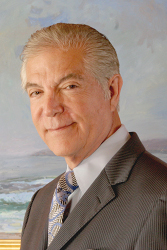
Alex Nogales, president, National Hispanic Media Coalition
Photo: National Hispanic Media Coalition
A podcast interview with Alex Nogales, president, National Hispanic Media Coalition (NHMC) is available in the Podcast Section of Hispanic Marketing & Public Relations, HispanicMPR.com. During the podcast, he discusses the National Latino Media Council National Hispanic Media Coalition NLMC/NHMC Writers Program with Elena del Valle, host of the HispanicMPR.com podcast.
Alex is also chief executive officer of the National Hispanic Media Coalition. Since the late 90s when he was elected president of the organization, Alex has advocated for the Latino community. He led boycotts against the advertisers of the syndicated Howard Stern radio show as a means of getting Stern off the air when he offended the Latino community and the family of the late singing star, Selena Quintanilla-Perez, with his comments following the singer’s tragic murder.
Under his leadership, the NHMC has filed over fifty petitions to deny broadcast licenses with the Federal Communication Commission (FCC), including one against a Spanish-language radio company for encouraging its DJs to air pornographic radio programming to boost their ratings. Alex also led high-profile demonstrations against ABC and its parent company, Disney, for its lack of diversity and apparent exclusion of American Latinos from local news reporters and anchor jobs, and intensified discussions with local TV stations across the country. As leader of one of the more visible organizations under the umbrella of the National Latino Media Council (NLMC), for which NHMC acts as secretariat and staff, Alex was instrumental in the signing of Memoranda of Understanding with NBC, ABC, CBS and Fox in the year 2000.
To listen to the interview, scroll down until you see “Podcast” on the right hand side, then select “HMPR Alex Nogales” or click on the play button below. you can also download the MP3 file to your iPod or MP3 player to listen on the go, in your car or at home. To download it, click on the arrow of the recording you wish to copy and save it to disk. The podcast will remain listed in the September 2012 section of the podcast archive.
Posted by Elena del Valle on September 14, 2012
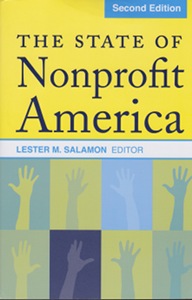
The State of Nonprofit America book cover
In The State of Nonprofit America Second Edition edited by Lester Salamon (Brookings Institution Press, $36.95 ), a 708-page softcover book, numerous researchers, analysts and academics examine the state of our country’s nonprofits. To make the publication of the book a reality Salamon partnered with the Aspen Institute’s Nonprofit Sector and Philanthropy Program.
Twenty-nine contributors (in the order in which they appear in the book) wrote the 19 chapters spread out into three main sections: Overview, Major Fields, and Major Challenges. They are: Bradford H. Gray, Mark Schlesinger, Donald M. Stewart, Pearl Rock Kane, Lisa Scruggs, Steven Rathgeb Smith, Stefan Toepler, Margaret J. Wyszomirski, Avis C. Vidal, Carmen Sirianni, Stephanie Sofer, Abby Stoddard, Mark Chaves, Elizabeth T. Boris, Mathew Maronick, Alan J. Abramson, Rachel McCarthy, Leslie Lenkowsky, Eleanor Brown, David Martin, Dennis R. Young, Mary Clark Grinsfelder, Kirsten A. Gronbjerg, Kevin P. Kearns, Atul Dighe, Marla Cornelius, Patrick Corvington, and Pascale Joassart-Marcelli.
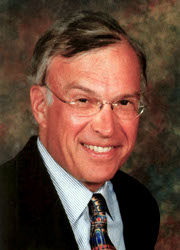
Lester Salamon, editor, The State of Nonprofit America
“The greatest achievement of the second edition of The State of Nonprofit America is to identify four impulses that are shaping the future of America’s nonprofit sector and to assess the future options that face the sector as a consequence,” said Salamon by email.
Although there doesn’t seem to be an official finite number for nonprofits, in part because many are unincorporated and data is scarce, the editor estimates in the book that by the late 2000s there were nearly 2 million organizations divided into four subgroups: service and expressive; social welfare and lobbying; foundations and funders; and religious congregations.
Nonprofits, Salamon states at the beginning of the book, continue to struggle in an environment that emphasizes profits; and the forces of volunteerism, professionalism, civic activism, and commercialism shape the country’s nonprofit sector. Many of the organizations respond with resilience, creativity and resolve; and although most nonprofits are constantly squeezed between their organizational identity and their need to survive the nonprofit sector is robust, according to him. He argues that broader understanding and support are necessary in order to preserve the unique characteristics that make up the individual nonprofit organizations and allow them to thrive in the coming years.
Contrary to what many may believe, relatively few nonprofits represent the needs of minorities or the poor, according to Joassart-Marcelli, assistant professor in the Department of Geography, San Diego State University, and author of the final chapter. He indicates that a disproportionate number of nonprofits serve middle and high income individuals and communities with education, arts, culture, recreation and health amenities.
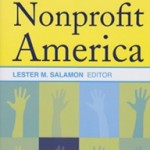
Click to buy The State of Nonprofit America
Comments:
Filed Under: Books
Posted by Elena del Valle on September 12, 2012
Chair of the Public Relations Department
Syracuse University’s S.I. Newhouse School of Public Communications seeks a Chair for the Public Relations Department—one of the most highly-regarded programs in the United States.
The successful applicant will have a teaching, research and service record appropriate for hiring at the level of Associate or Full Professor.
Click to read the entire 3 Positions in Public Relations
Posted by Elena del Valle on September 10, 2012
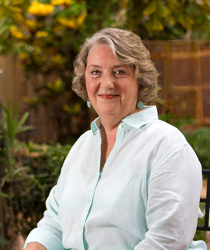
Mary Jo Aagerstoun, Ph.D., president, EcoArt South Florida, Inc.
Photo: Mary Jo Aagerstoun, Ph.D.
A podcast interview with Mary Jo Aagerstoun, Ph.D., president, EcoArt South Florida, Inc. is available in the Podcast Section of Hispanic Marketing & Public Relations, HispanicMPR.com. During the podcast, she discusses combining art, science and community with Elena del Valle, host of the HispanicMPR.com podcast.
An “accidental environmentalist” Mary Jo seeks to make a difference for South Florida’s environment through art that engages community. To this end, in 2007, she founded EcoArt South Florida, a nonprofit that brings together art, science and community engagement. Mary Jo’s increasing interest and self education in environmental issues led her also to several volunteer advisory experiences, including most recently as a consortium member of 7/50, a 50 year planning effort engaging seven counties in South East Florida, and funded by the United States Department of Housing and Community Development, and with her own city, West Palm Beach.
She is a member of the relatively new City of West Palm Beach Sustainability Advisory Committee where she serves as the chair of the subcommittee on natural resources and water conservation, and is a past member of the city’s Art in Public Places Board and the Comprehensive Plan update committee.
To listen to the interview, scroll down until you see “Podcast” on the right hand side, then select “HMPR Mary Jo Aagerstoun, Ph.D.” click on the play button below or download the MP3 file to your iPod or MP3 player to listen on the go, in your car or at home. To download it, click on the arrow of the recording you wish to copy and save it to disk. The podcast will remain listed in the September 2012 section of the podcast archive.
Posted by Elena del Valle on September 7, 2012
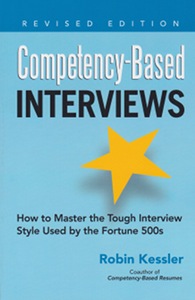
Competency-Based Interviews, Revised Edition book cover
Many times in academic and business situations success hinges on test taking, interview taking and other skills that have little to do with the eventual employment, appointment or other opportunity a candidate applies for in a given situation. Why are some people selected and others with similar credentials rejected? Robin Kessler, a human resources consultant, believes that recognizing change and being able to adapt to it before others do increases the probability of succeeding.
In Competency-Based Interviews, Revised Edition: How to Master the Tough Interview Style Used by the Fortune 500s (Career Press, $14.99), a 223-page softcover book published this year, she discusses her ideas about behavioral interviews targeting relevant competencies.
The author strives to provide prospective interviewees an edge in an interview by helping them understand how human resources professionals approach interviewing and hiring, and anticipating what an interviewer may seek; recognizing the changes in interviewing that are being implemented at sophisticated organizations; pointing out to the decision makers how the interviewees competencies match their needs; and developing a plan to drive top performance during interviews.
In the 16-chapter book, she stresses the importance of thinking strategically. Three first steps she points out are to discover what it takes to win, doing the things required to win and being aware that what it takes to win may change. At the end of each chapter she summarizes the essence of the chapter in a question and answer format.
Kessler, president, The Interview Coach, a Texas based career consulting and human resources company, has 20 years of experience. She is author of Competency-Based Performance Reviews and co-author of Competency-Based Resumes.
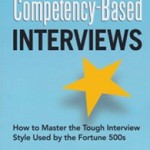
Click to buy Competency-Based Interviews, Revised Edition
Comments:
Filed Under: Books
Posted by Elena del Valle on September 1, 2012

I’ll Have What She’s Having book cover
Photo: The MIT Press
In what ways does social learning shape human behavior? In other words, does what a friend or acquaintance think or say affect what someone does? If the well known scene of the movie When Harry Met Sally where Sally, while having lunch with Harry at a deli, fakes an orgasm in a loud way audible to her neighbors prompting one of the patrons of the deli to order “what she is having” from the waiter is to be believed social behavior is clearly impacted by the behavior of others.
Alex Bentley, Mark Earls and Michael J. O’Brien believe that social learning affect social behavior in a variety of ways, expending from an individual outward to a community and population. In I’ll Have What She’s Having Mapping Social Behavior (The MIT Press, $22.95), a book with an an academic tone published last year, they describe their ideas about social learning and its impact on society. They believe that many people are lazy, relying on others to think and store knowledge.
The book, they say in the Preface, is meant to provide a human behavior map to readers. According to the authors, people are “beset with emotions and cognitive biases, and much of the time we avoid thinking altogether” instead of the calculating and rational beings some like to believe they are. The social nature of evolution and behavior affects culture, especially among masses of people in modern times, they say.
Social learning drives the spread of culture and human behavior and diffuses innovations, according to the authors. To understand the learning patterns they identified three models: diffusion, cascades and undirected copying. The 146-page hardcover book is divided into seven chapters: Out of the Trees; Rules of the Game; Copying Brain, Social Mind; Social Learning en Masse; Cascades; When in Doubt, Copy; and Mapping Collective behavior.
Bentley is professor of anthropology and archeology at the University of Bristol, United Kingdom. Earls is a London-based author and marketing consultant. O’Brien, dean, College of Arts and Science, professor of anthropology and director of the Museum of Anthropology at the University of Missouri.

Click to buy I’ll Have What She’s Having
Comments:
Filed Under: Books




























